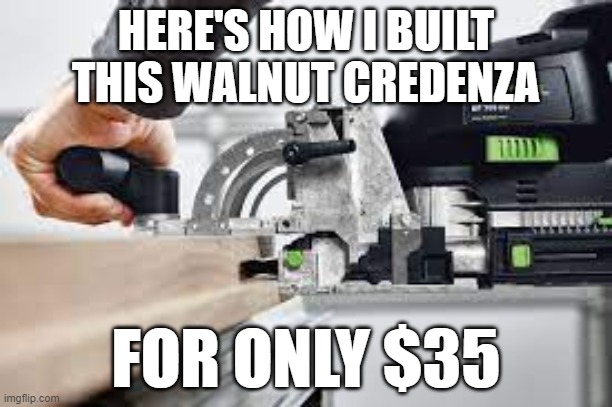this post was submitted on 01 Dec 2023
256 points (94.8% liked)
Woodworking
6146 readers
3 users here now
A handmade home for woodworkers and admirers of woodworkers. Our community icon is a planter box made by @Captain Aggravated, the winner of our summer '24 woodworking contest. Congratulations!
founded 1 year ago
MODERATORS
you are viewing a single comment's thread
view the rest of the comments
view the rest of the comments

I can edge glue boards without all that and they are plenty strong . A little more effort to align them I suppose, but otherwise I don't see the point. If I did a dowel jig is trivial to make.
Don't even need a dowel jig, nail head in-between the boards and a slight tap on either side you have a marking that lines up on both sides
Thank you! Youtube has been trying for ages to get me to watch some clickbait video where the thumbnail is a nail between two pieces of wood. Now I finally know what that does without watching the video.
And if you tape it into the corner of your combination square:
If you are doing floating tenons, just mark the ends. If your tenons need to be vertical with respect to your reference face, use a long nail or screw, mark the tops, adjust the height, mark the bottoms.
If you can tolerate more offset or are willing to always layout to compensate, drive a woodscrew vertically in a long narrow block with only 2 square faces. Adjust the screw depth as appropriate. The block gives you something to hang onto without taping anything.
And now I bet you're envisioning the construction of your own dedicated jigs made from scraps and wood or drywall screws.
@MaggiWuerze@feddit.de
I absolutely agree, usually I go for the ganged up edge planing to get that complementary mating edge. Also if I were more than a hobby shop and doing things for money on a time budget, I'd probably think about buying some of that oh so expensive Festool stuff.